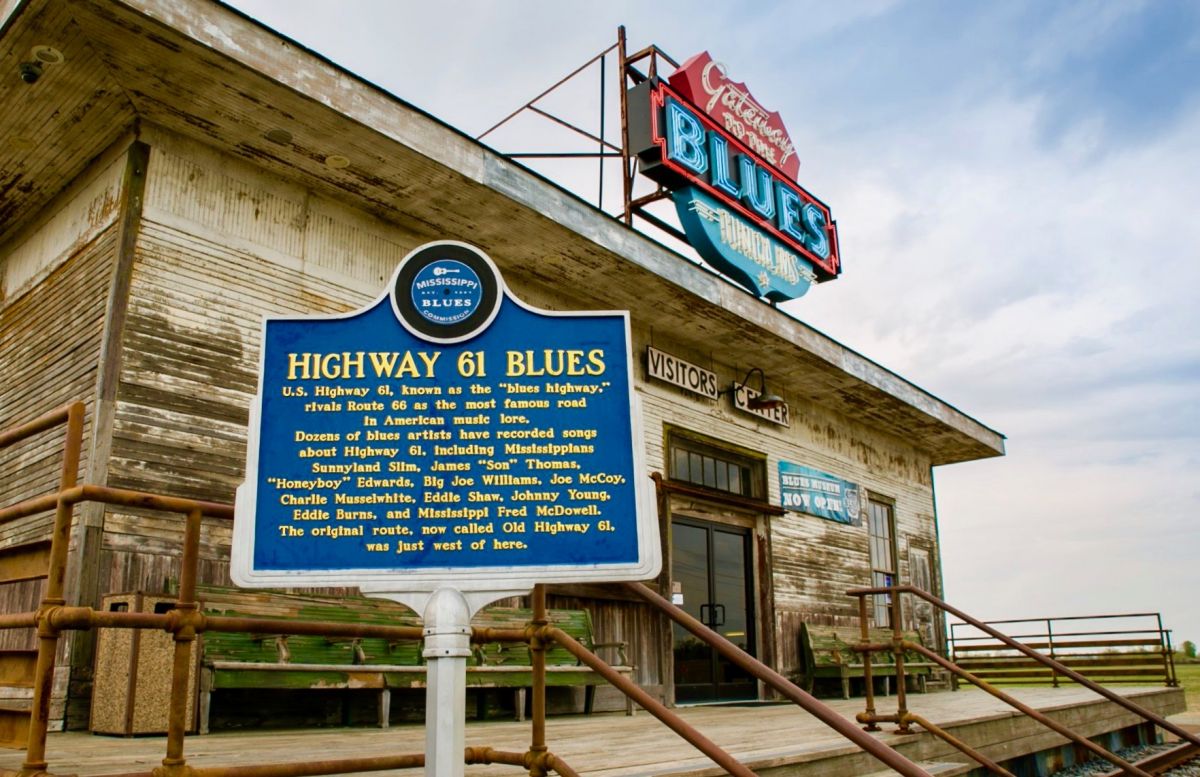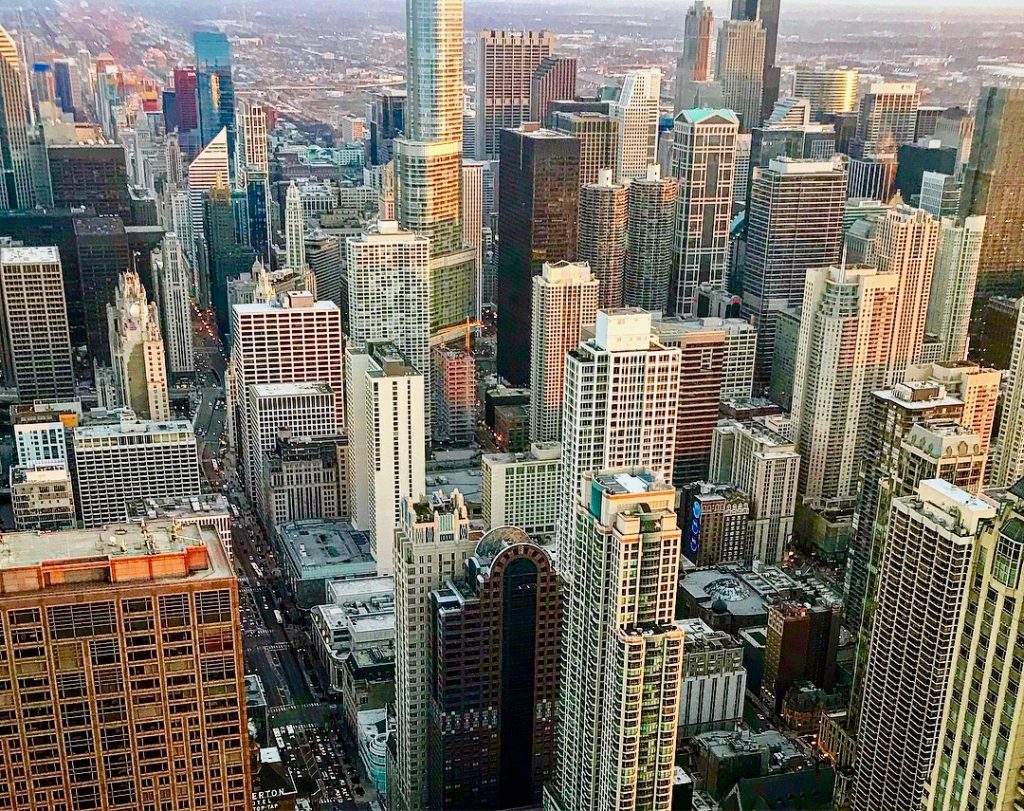

In Italian
A journey to Chicago – to define it complete – requires time and above all more days.
Days to dedicate to its most famous and visited attractions: I mean the Magnificent Mile, the huge buildings of the Loop, the Skydecks of the Willis Tower and the John Hanckock Center, the public artworks of the Millennium Park, the Navy Pier, the Chicago River, the Winkler Park, the nightclubs where to listen to the best Chicago Blues, those ones where to eat the authentic Deep Dish Pizza and the famous Chicago Hot Dog, and some among the most popular and appreciated museums in the country.
And at least an additional day to explore further places, installations and paths for real experts, lovers of art, literature, movies, history and sport made in USA!
Find down here some precious suggestions – in good part unusual – to discover and learn about other faces, experiences and stories about the Windy City.

A journey to Chicago: 7 unusual places and paths – among movies, art, history and literature – to discover
Officially opened on May 16, 2017 the American Writers Museum – inspired to the famous Dublin Writers Museum in Dublin – is entirely dedicated to the American literature and its writers.
The goal of this museum is not only to celebrate the great protagonists of the American literature, but above all to allow visitors/readers to understand how their works – and through them the way of reading and interpret the several historical eras – have influenced the social and cultural identity of the United States in an important way.
A museum for fond readers, but also for curious visitors, to learn about the American writers of the past and the present, to rediscover the love for the “written” and “spoken” word and for the good reading, to inspire and motivate tomorrow’s writers.
A journey among words, emotions and relics of the greatest artists of the American scene. Through a series of permanent expositions which some really interesting temporary exhibitions add to.
The American Writers museum is located little far from the Chicago Cultural Center at 180N, Michigan Ave. It is open 7 days’ a week 10am-5pm.
You can look up directly the American Writers Museum Official Website for further info about the period of your tour.
First public library of the city, built in beaux arts in 1897.
The Chicago Cultural Center – set location of famous movies, among them “The Untouchables” by Brian De Palma – today is a lively cultural center where to watch free meetings, events, presentations and concerts.
The building is a real treasure from an architectonic point of view: not to miss the passage in the original entrance in Washington Street, a lobby embellished with Carrara marbles, enamels, precious stones and nacres, and the wonderful Preston Bradley Hall keeping inside the biggest Tiffany windows dome in the world.
From Wednesday to Saturday some free guided tours of about 45 minutes leave at 1.15pm. Further info here.
The Chicago Cultural Center is located in front of the Wrigley Square in Millennium Park. It has two entrances: one in Randolph Street and the other one – that one allowing to go through the original Lobby – in Washington Street.
Chicago has been a set movie in the open sky since ever.
Its amazing architectonic masterpieces, the art deco buildings, the supra-elevated subway, its public art works and even the suburbs districts have been the background of a series of successful movies and TV series (like Chicago Fire and Chicago Police Department, for example).
What about some titles?
The Sting, The Blues Brothers, The Color of Money, The Fugitive, Miracle on 34th Street (yeah, the movie is set in New York, but it is filmed for a good part in Chicago). And what remains a cult, tied forever to the streets and the historic buildings in Chicago: the Untouchables by Brian De Palma.
The movie dedicated to the story of the gangster Al Capone and Elliot Ness – the treasure agent who was able to caught him up together with a team of “untouchables” – built on a stellar cast – among them Robert De Niro, Sean Connery (Academy Award for Best Supporting Actor), Kevin Costner, Andy Garcia – was almost completely filmed in Chicago.
Many of the locations used can be still seen and sometimes visited, and above all easily reached.
The wonderful Roockery Building – in part remodeled by Frank Lloyd Wright – in La Salle Street (the street you’ll recognize thanks to one of its most suggestive scenes of “The Untouchables”) in the movie is the building hosting the police department.
The near and beautiful Union Station – precisely the entrance stairs from South Canal Street taking to the great waiting room – is the location of the famous shooting scene on the stairs with the pram going down uncontrolled.
The Chicago Cultural Center borrowed its wonderful beaux arts insides for the final scenes of the tribunal and for the private rooms where Al Capone welcomes the journalists at the beginning of the movie and where he murders a “traitor” with a baseball bat during a gangster and corrupted businessmen dinner.
Our Lady of Sorrows Cathedral at 3121, West Jackson Boulevard is the church where Sean Connery and Kevin Costner decide to set out on a fight with no holds barred against Al Capone.
The opening sequence of the movie – when a bomb in a suitcase is put inside a café/store where the owner refuses to buy a poor quality beer produced by an Al Capone’s company – was filmed at 3369, North Clark Street. Today it is a pub – The New Houndstooh Saloon and only a part of the external decoration of the movie’s café remains.
The first meeting – at night – between Sean Connery and Kevin Costner occurs on the bottom pedestrian part of the Michigan Ave Bridge, with the Chicago River on the background.
Oak Park can be easily reached thanks to the Blue Line L, directly from the Loop stations.
It’s an elegant residential village about 10km far from Chicago, made famous by one of the greatest American architect, Frank Lloyd Wright, the creator of “Praire”, an architectonic style with simple and essential lines.
Here you can visit his home-studio (Wright lived in this district for several years between the end of the 1800s and the early 1900s and right here he planned over 150 buildings) and admire a series of wonderful private buildings realized upon his project and/or inspiration.
Among these: the Beachy house, the three buildings facility of The Bootles Houses, the Edwin Cheney House – Wright escaped to Europe with Madame Cheney (that then died tragically together with her kids in their “Love Cottage”), who he fell madly in love with, abandoning his family and his job – and the Nathan Moore House.
If you have time in your hands, my tip is to visit the Frank Lloyd Wright Home and Studio and plan a walking tour through the houses of the district on the official website. Or – if you have a short time – go to the Oak Park Visitor Center at 1010, Lake Street and buy a guided walking tour or get maps and brochures to move alone discovering the district and Wright’s works.
Always in Oak Park the lovers of American literature will have the chance to visit another famous dwelling – Ernest Hemingway’s home – and a little museum dedicated to the early years of his life, both run by the Ernest Hemingway Foundation of Oak Park.
Hemingway was born at the third floor of this Victorian building dating back to 1890 – the first one in Oak Park having power – on July 21, 1899. He spent the first 20 years of his life (the first 6 ones in this house) in this suburbs of Chicago and here – stimulated by his mother above all – he started to become a writer with the high school’s newspaper and the tales about the places and the people of his teenagehood.
Book here your guided tour.
The facility is located at 339N in Oak Park Ave, little far from the Frank Lloyd Wright Home and Studio.
The Chicago History Museum represents the most ancient cultural institution of the city.
It was founded by the Chicago Cultural Society in 1856 with the aim of preserving and increasing one of the greatest collections of relics and objects related to the Chicago history, and to the United States of America one in a good part.
A wide section of the exposition was destroyed together with its original building in the terrible fire in 1871. Upon the willing of the members of the Chicago Cultural Society – trying not to let go a such important historic memory – the collection was progressively enriched with really new precious purchasing and definitively put again in the big colonial style building where it is located still today, near Lincoln Park.
The tour is equivalent to set out a downright journey back in time into the Chicago history.
Starting from the great fire in the late 1800s which razed the city to the ground, the gangsters’ deeds – not to be missed the section dedicated to Al Capone and Elliot Ness – the birth of the Chicago Blues, the Civil Rights’ deeds, the Pioneer – an authentic steam locomotive perfectly working – and really high value objects: manuscripts, paintings and really precious objects like the compass belonged to president George Washington and the bed of the Washington DC house where President Abraham Lincoln died.
The Chicago History Museum is located at 1601 N, Clark Street: the nearest highway subway stop is Sedgwick, purple or brown line.
The museum is open seven days a week. You can plan here your tour according to the schedules looking up directly the museum official website.
The Wrigley Field is one of the oldest stadiums of the Baseball Major League. It dates back to 1914 and its historic team – the Cubs – is one of the most particular ones.
You know that it hasn’t won a world series since 1908: for many locals the murphy ‘ failt anathema and its owner, Billy Goatì – owner of the Billy Goat Tavern with the same name – who, kicked away from a championship match because of the smelly animal, launched a spell so the cure would have never won anything anymore. And actually today is still like that.
If you are in town when the Cubs play home, let you tempt by the chance to watch one of their matches – really fun and above all recommended for families with children – or at least take part into one of the guided tours in the week, with anecdotes and curious issues included.
The Wrigley Field is located in the Northside and it can be reached easily by the Blue Line L, Addison stop.